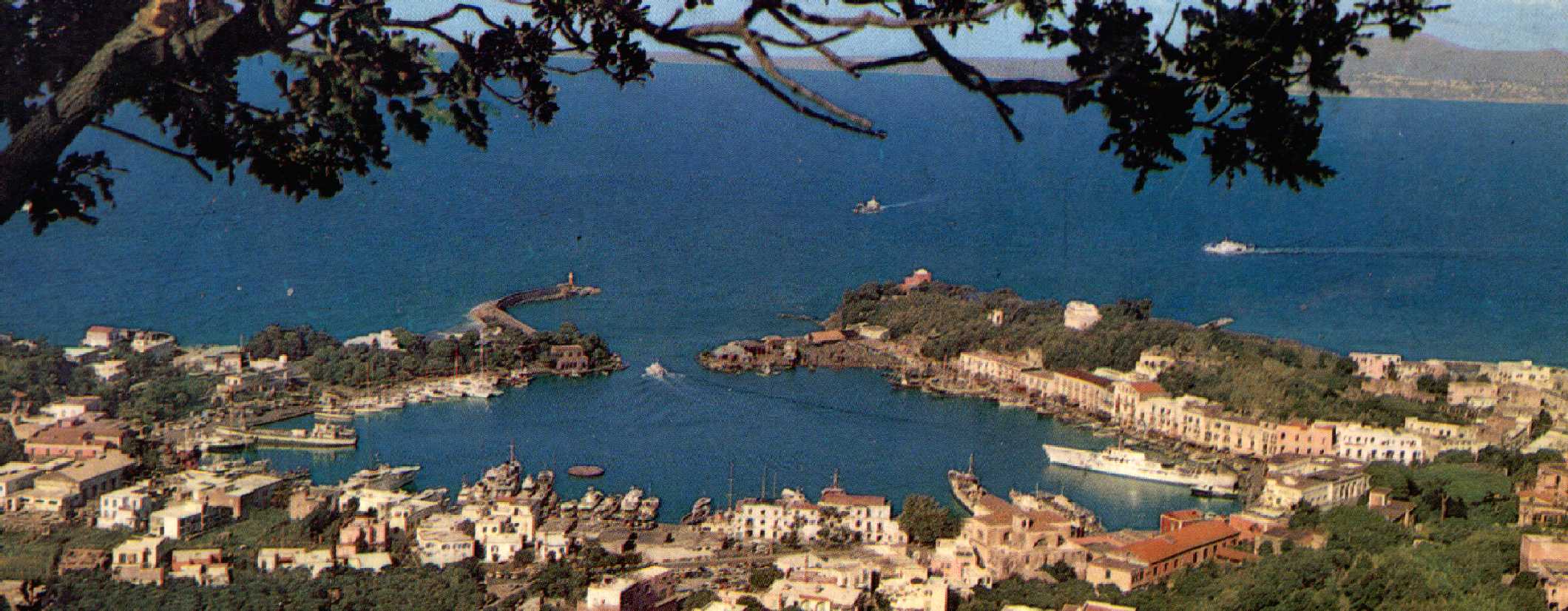
Morfology , geology , vulcanology and seismology of our Island
Group work of the class I H of S.M.S. in Forio díIschia
Morfology and curiosities

We are the boys of the first class H in Forio díIschia (Neaples), we are only fifteen pupils as the classroom where we have our daily lesson is very small.
To introduce us, we include in this work a photo of the class together with the teacher of Maths and Science, Prof. Iacono Rodrigo, who led us in this scientific discovery of our land.

From the left to the right and from the top to the bottom we introduce ourselves: Colella Anna, Regine Luisa, Amalfitano Maria, Lamonaca Chiarastella, Di Meglio Elena, the prof. Iacono Rodrigo, Misto Nicola, Calise Mirko, Maschio Francesco, Scardinale Francesco and Colella Pierpaolo, Guerra Paolo, Lamonaca Salvatore, Impagliazzo Matteo, Carnevale Giuseppe and Di Maio Natalino.

Concerning the morfology we can neatly see that the island is divided into two mountainous groups, the one of Mount Campagnano on the left and the one of Mount Epomeo on the right, by a deep track that is the depression along which runs the way that from Porto díIschia leads to Testaccio.

Seen from above our island, which has got an extension of 47 Kmq (Itís the largest in the Gulf of Neaples) is domonated by Mount Epomeo around which there are hills of different dimension and some of them extend till the sea-side, shaped like green peninsulas and small islands, pleasant places, loved in all the world for their extraordinary beauty.

The "Aragonese Castle"
was built about 6 centuries ago, on one of these small islands, but on it there was already a fortress bulit by the "Syracusans" of the Magna Grecia in 474 b.C.The photo it self shows the beauty of the place.
Few hundreds of metres far from this small island, where we can see the rocks of Saint Ann, was built the town "Aenaria" which in the third century A.D., sank under the sea for a sudden bradyseism.
During the last century the "Bourbons" used this Castle as a prison for politician prisoners waiting to be hanged.

The small peninsula of Saint Angelo seen from Punta del Chiarito.
This peninsula is washed by the sea, nearly, for its 4/4, as it is tied to the island of
Ischia by a thin layer of sand.
A very beautiful cliff, a clear blue sea that works, besides, as a perfect touristic and fishing harbour. The photo has been taken from Punta Chiarito (you can see it), from which comes out the thermal spring of Sorgeto with a temperature of about 78į C.
In this spring lots of people from all over the world come to bath also during winter.
The two places shown in the photo are the most crowded in the island, most of all from German tourists.


The Fungo
(mushroom), another small rock here photographed from the promontory of Mount vico. The area around it was populated since the VIII century b.C. by the Greeks, who built the town of Pithecusa, the most ancient greek colony in the West Mediterranean.
 Very charatteristic are the two towers in Forio.
Very charatteristic are the two towers in Forio.
They were built with square green stones of tuff from Mount Epomeo. These towers were very useful to defend from the pirate raids (Saracens).


A very beautiful house built in the green This house, in Ciglio too, is called the tuff situated in Ciglio. "Ship" and is now a "Restaurant".
The tuff green, typcal stone ischitana, has always been used to build houses and also the most important buildings. Sometimes houses were excavated directly in the stone and that happened most of all in Ciglio and Falanga where the islanders took refuge anytime there was a pestilence or an invasion.

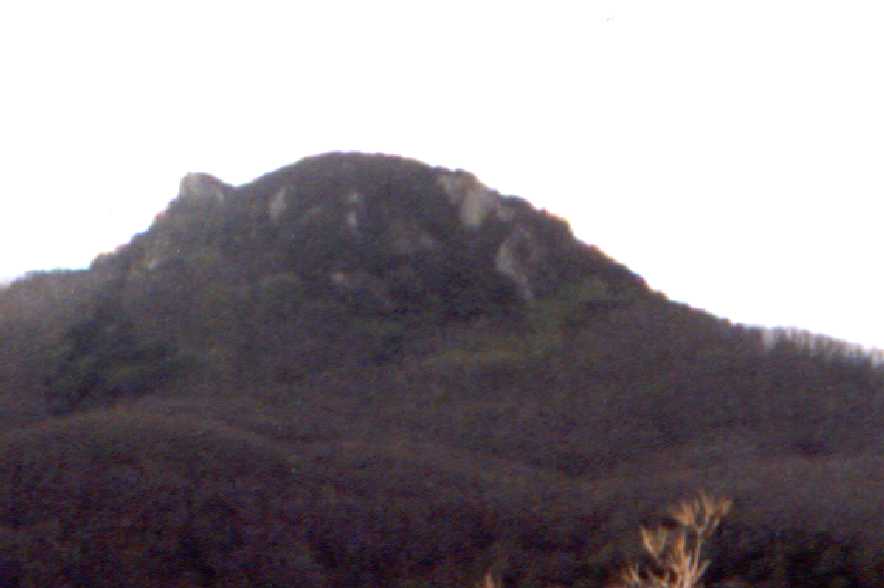
"Manís head" and its characteristics
These last two photos remember the legend of the giant Tifeo, who sleeps under the island of Ischia with the warm of the fumaroles and with the shadow of the ever green Mediterranean Woods. The giantís limbs emerge here and there in different places of the island: the "Manís head" shows the "Head" of this giant.
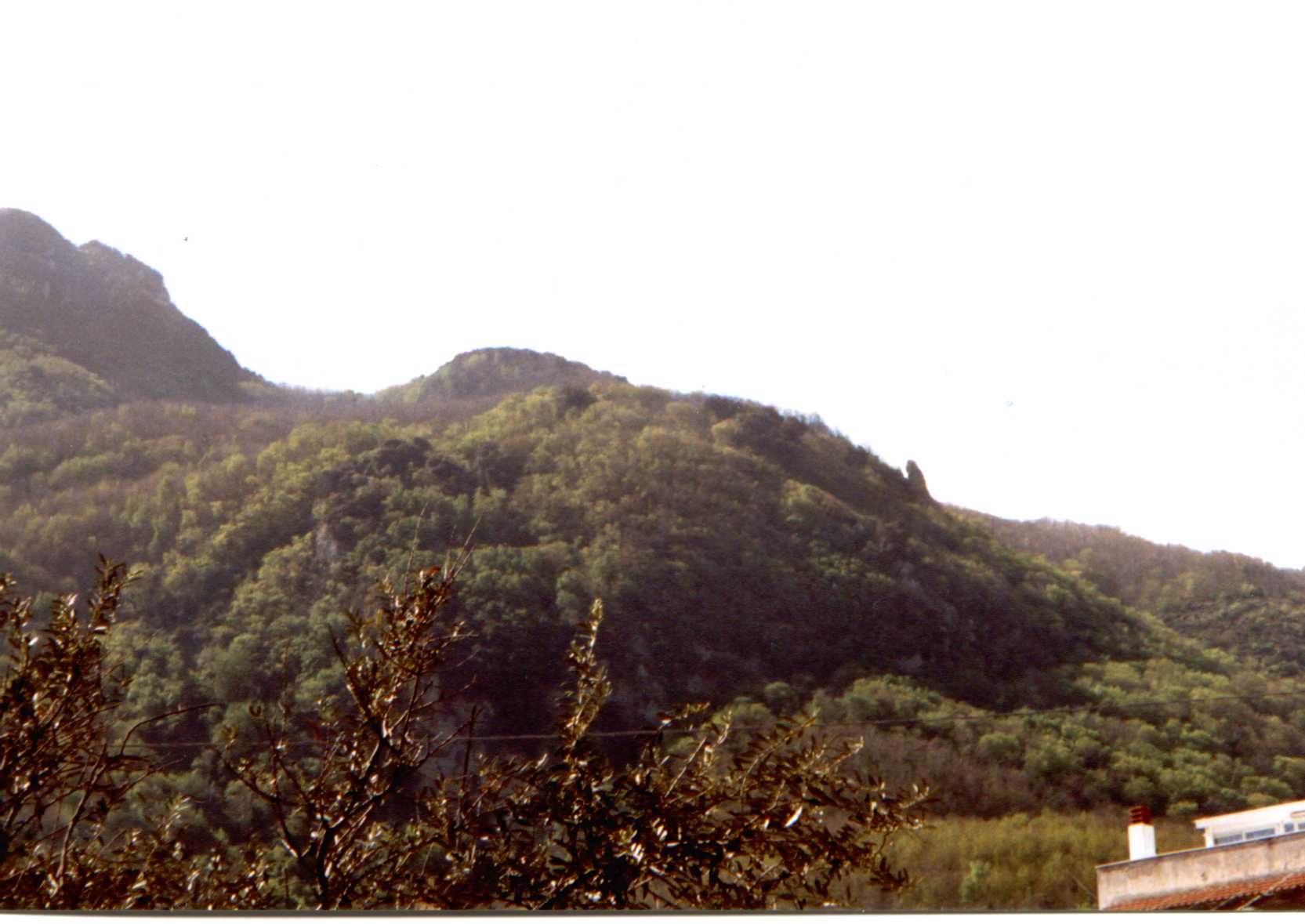
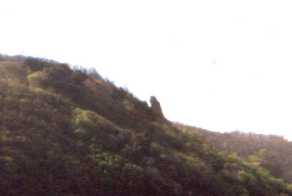
Mount Pizzone
A cyclopean stone of green tuff that zooms upwords is clearly another limb of the giant Tifeo. His feet are situated in a place called Pelara (Forio).
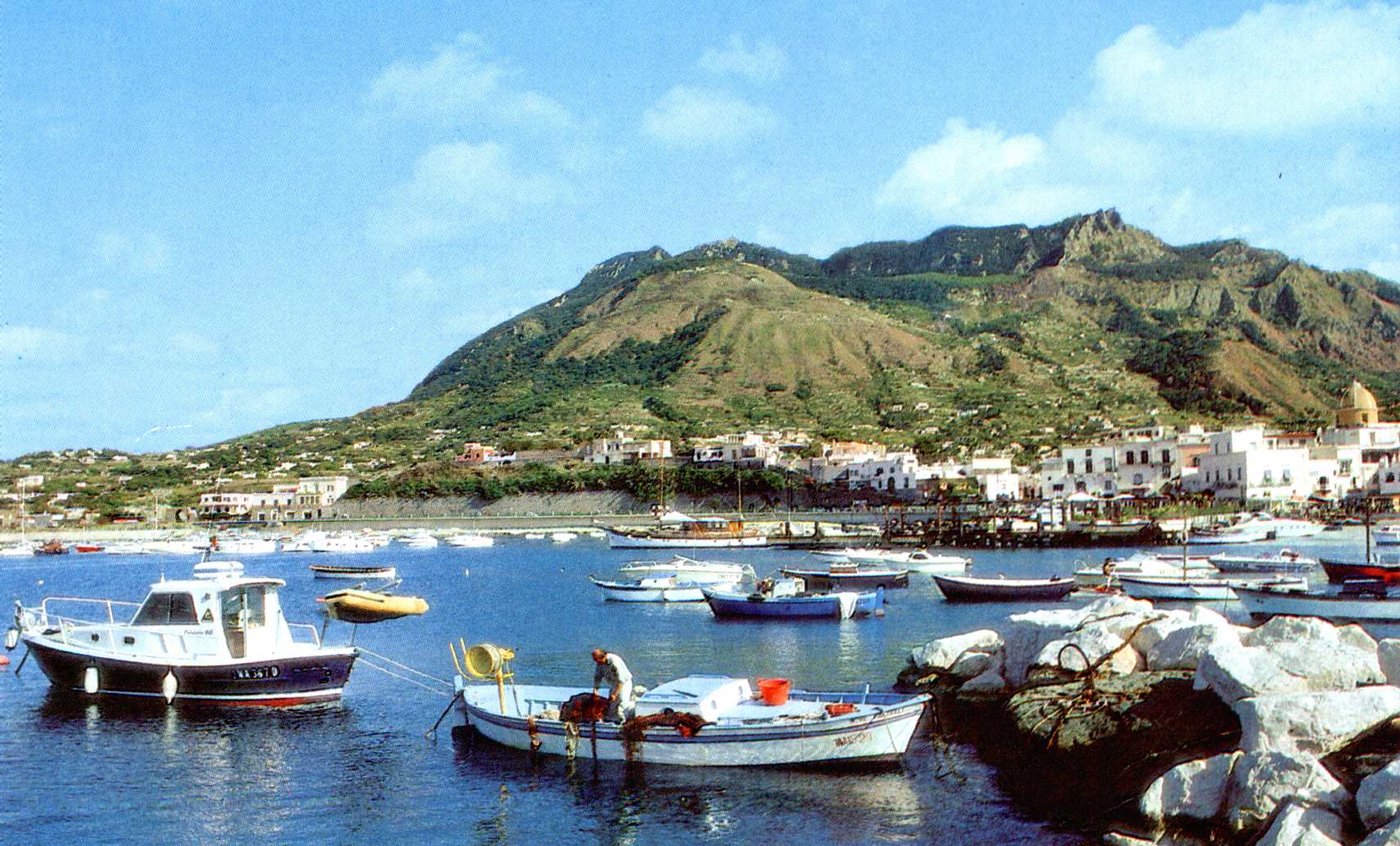
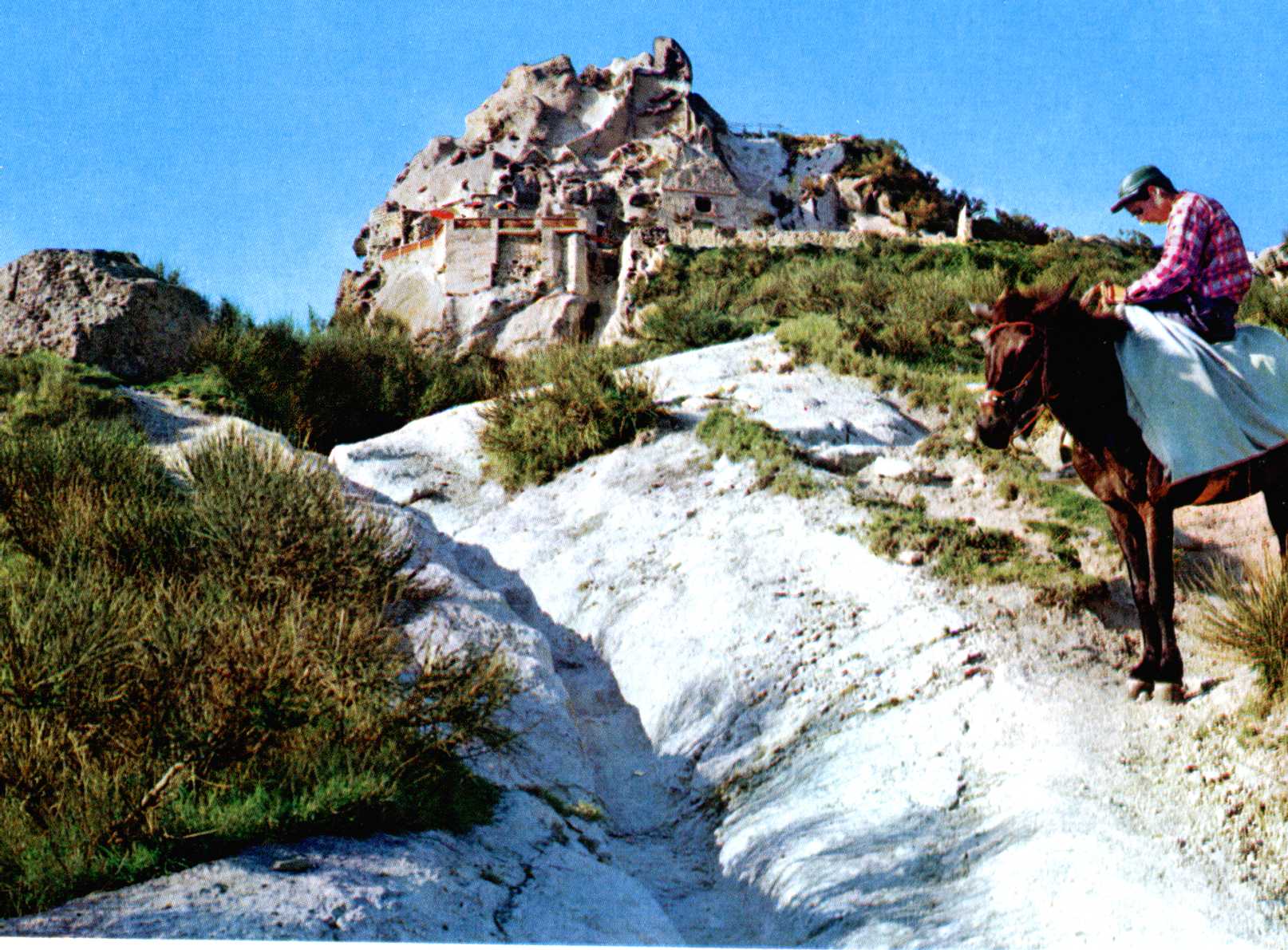
Mount Epomeo seen from Forio. The Peak of Mount Epomeo.
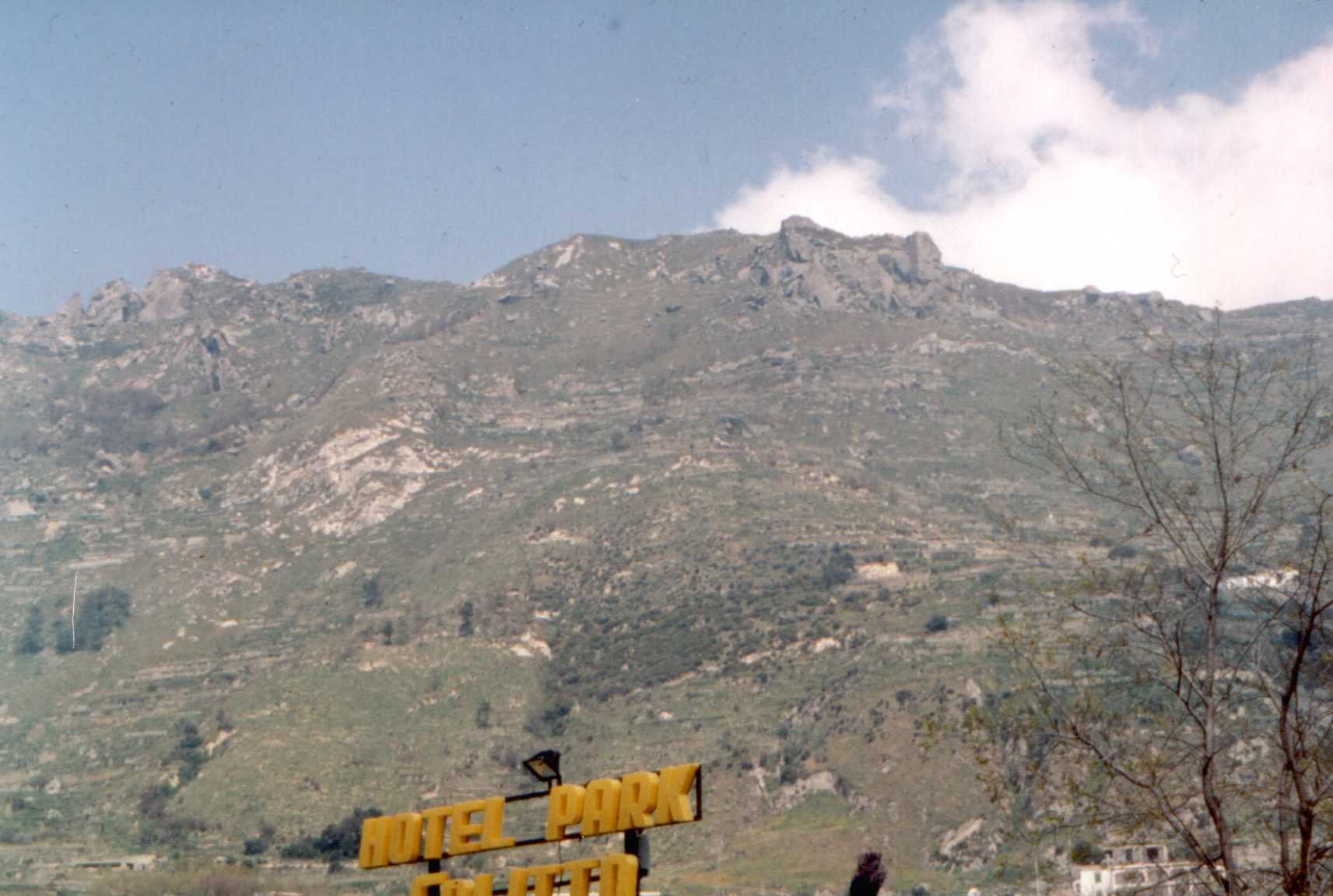
The mouth of Serra
Itís a large stone of green tuff shaped like a castle with two towers sculptured by the nature. The last three photos show how the green tuff gives to our island special colours and fascination, creating landscapes and picturesque shapes.
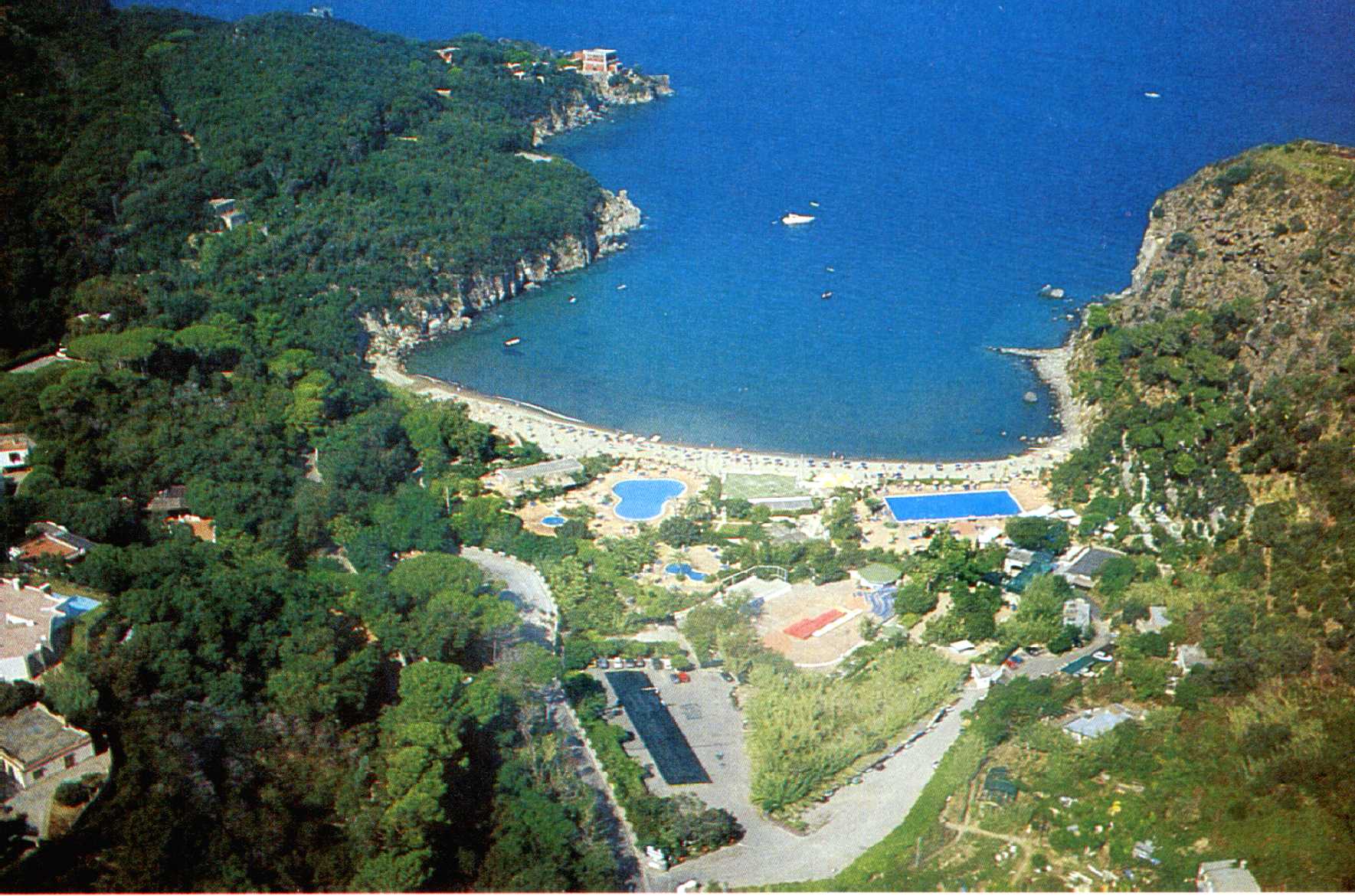
Saint Montano bay
We can find around our island wonderful bays, like the one of Saint Montano, with a magnificient blue sea and situated between two green promontories (Zaro and
Mount Vico).
Our island: geology and volcanology
Like the goddess Venus,
Ischia was born two hundred-thousand years ago emerging from the deepness of the blue-sea and like Aphrodite is very beautiful, and well-known all over the world.Led by the teacher of Science Prof Rodrigo Iacono we had some excursions on our island to know its different aspects of its geology and volcanology.
Of cours we did, first of all, a serious introductory work in the classroom to prepare our excursions. Infact our teacher showed us, with plenty explanation, a detailed map of the island; many specemen of insular plants, several fragments of volcanic rocks taken in various places on the island among which, trachytes, lapillus, pumices and ashes.
In this way we had the chance to touch and study, thanks to the teacherís explanations, these essential elements, useful to understand the things we should have then seen.
Finally arrived the time to start our excursions during which we took a lot of photos and thanks to them we are going to show you all we learnt during our excursions.
Telling the truth, the first photos we took werenít at all beautiful, for our cameras were rather in bad condition, but with time we improved.
By the explanations of the photo we now introduce you, we hope to transmit you the feeling we all received, that is Ischia, even being very small, is a very complex reality, both concerning the geologic-volcanic point of view and from the vegetation point of view and at the end for its climate.
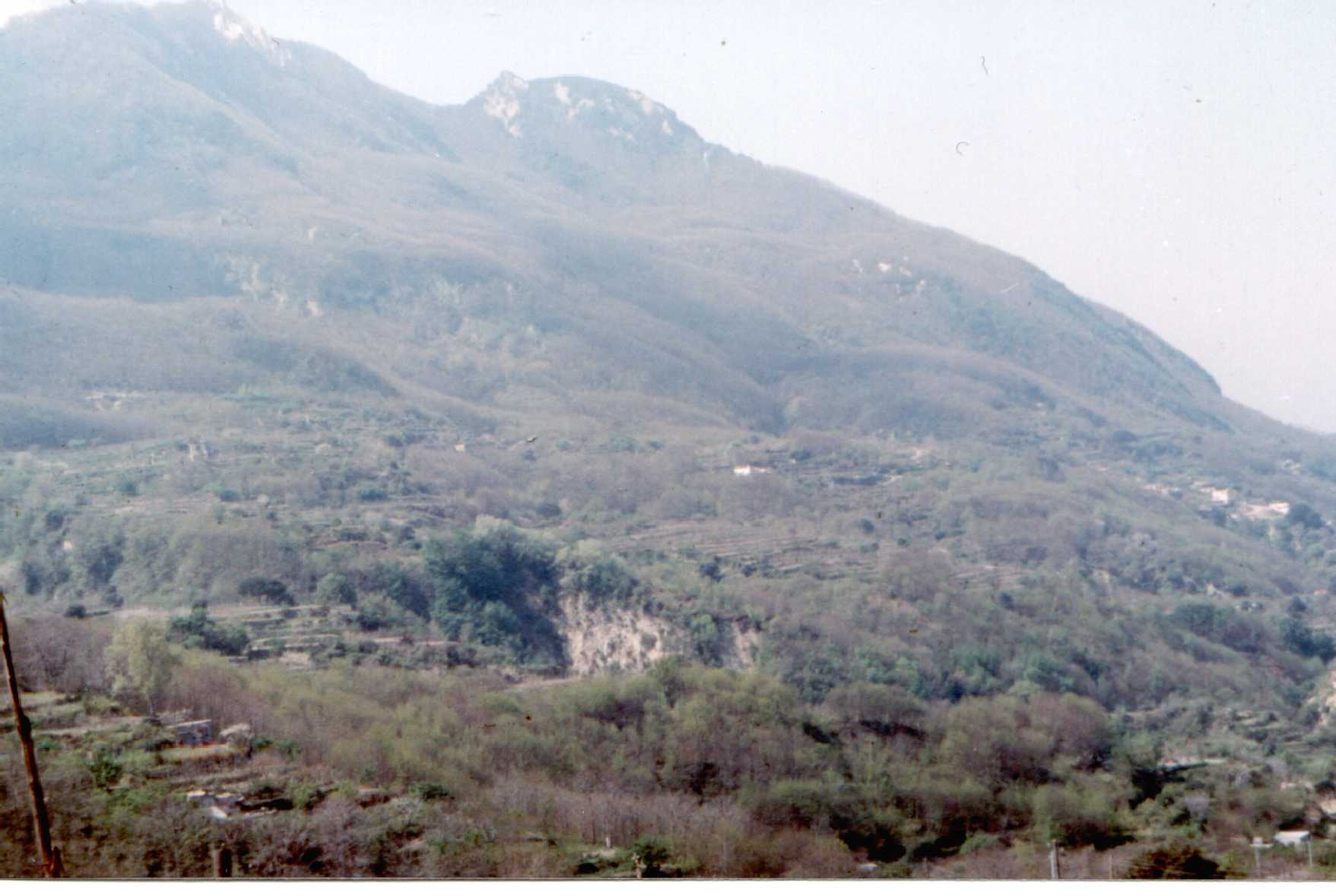
Photo n.1
at the feet of the Manís head there are the fumaroles of Mount Cito.On the place we can see how close to the solfatara, where life is impossible for its high temperature and the sulphur vapours, flower the heather and the lentisk, showing in this way their great adaptability.

Photo n.2
: view of Mount Pizzone (on the left of Mount Nuovo, photografed from the "Fango" (Mud) with its characteristic huge stone of tuff looking like a spur falling in the slope. Around this rock there are many fumaroles that we can see looking from far in the first hours of the morning, most of all during wet, cold and rainy days, as in such conditions the vapours coming out from the land condense quickly.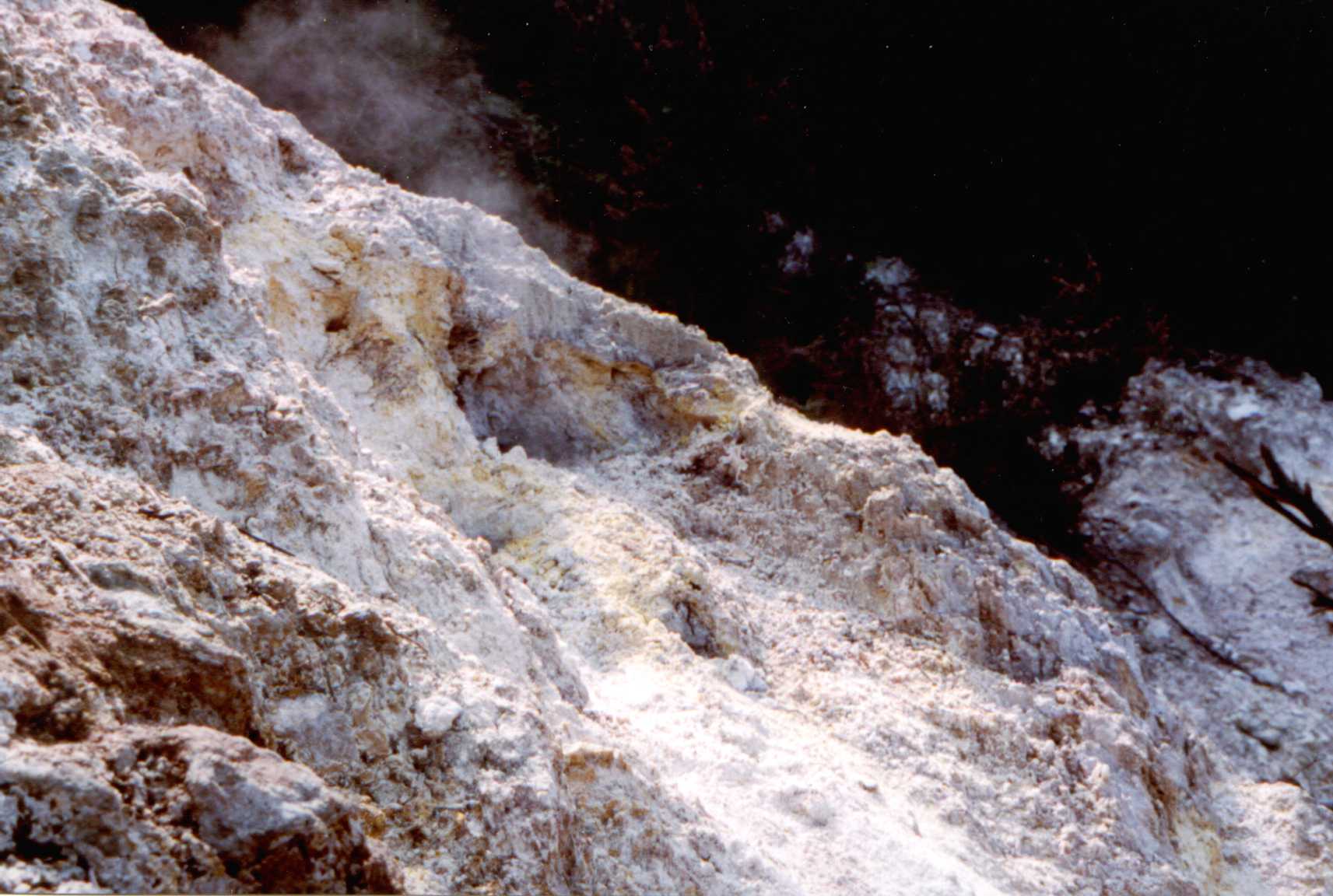
Photo n.3: here we can see the fumaroles of Mount Pizzone with their typical yellow sulphur crystals, Touching the point from which come out the water vapours, we can easily feel the high temperature with which the water and sulphuric acid vapours come out in the surface (about 80į C) and then the quiescent volcanic activity that is definitely not dead.
The typical smell of putrid eggs shows immediately the closeness of a fumarole (that in this case is said solfatara). All around we can easly see the strange white colour of the ashen land for the chemical alteration of the rocks due to the gasses that cross them. There is even on the Northen slope of Mount Epomeo, a place called "bianchetto"(small white) thanks to such alteration.
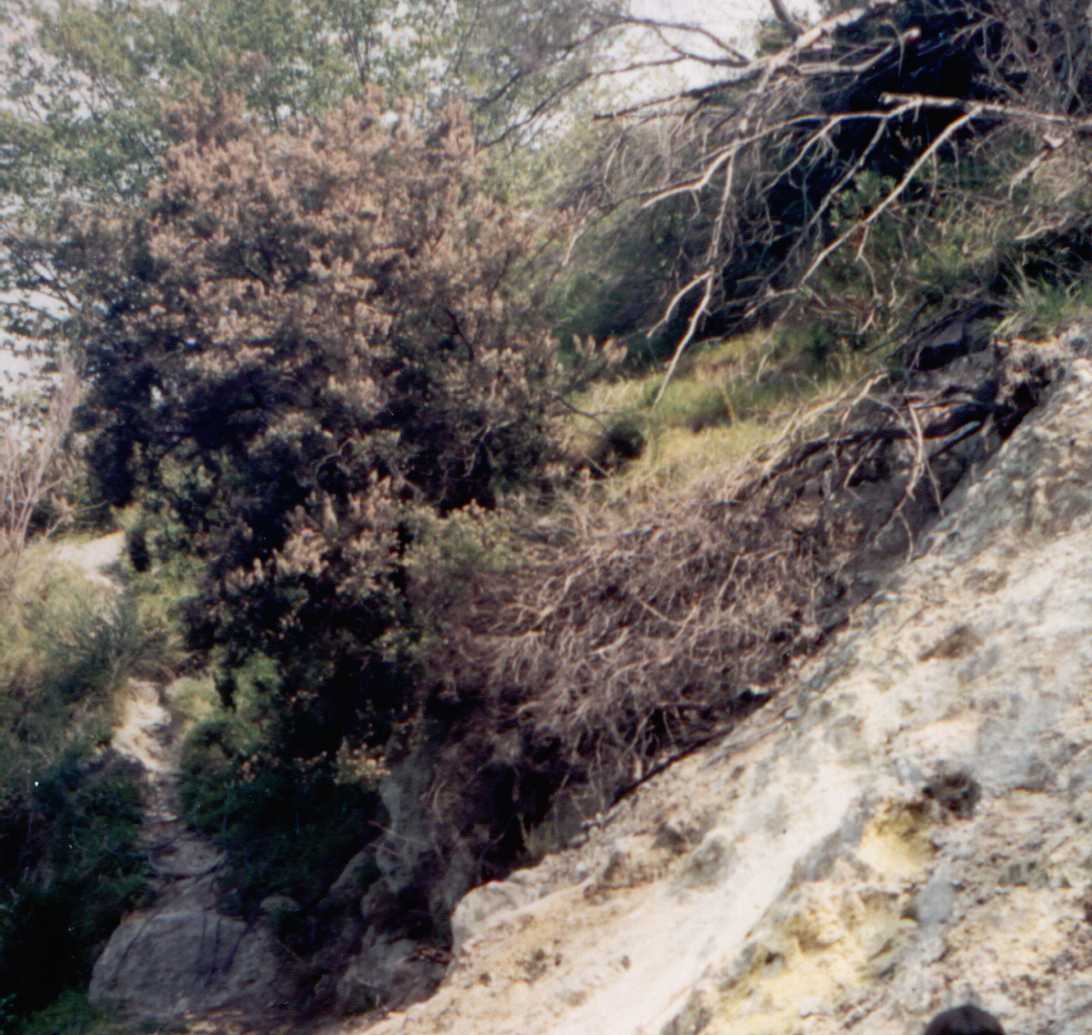
Photo n.4
: we can clearly see that the area envolved with fumaroles is totally desert, thatís for both the toxicity of the sulphur vapours and for the high temperature, but, just very close we can see that, almost challenging the solfatara, raises a heather that is one of the typical plants of the Mediterranean bush. This is a clear signal that this sort of vegetation is able to adapt to the most difficult conditions.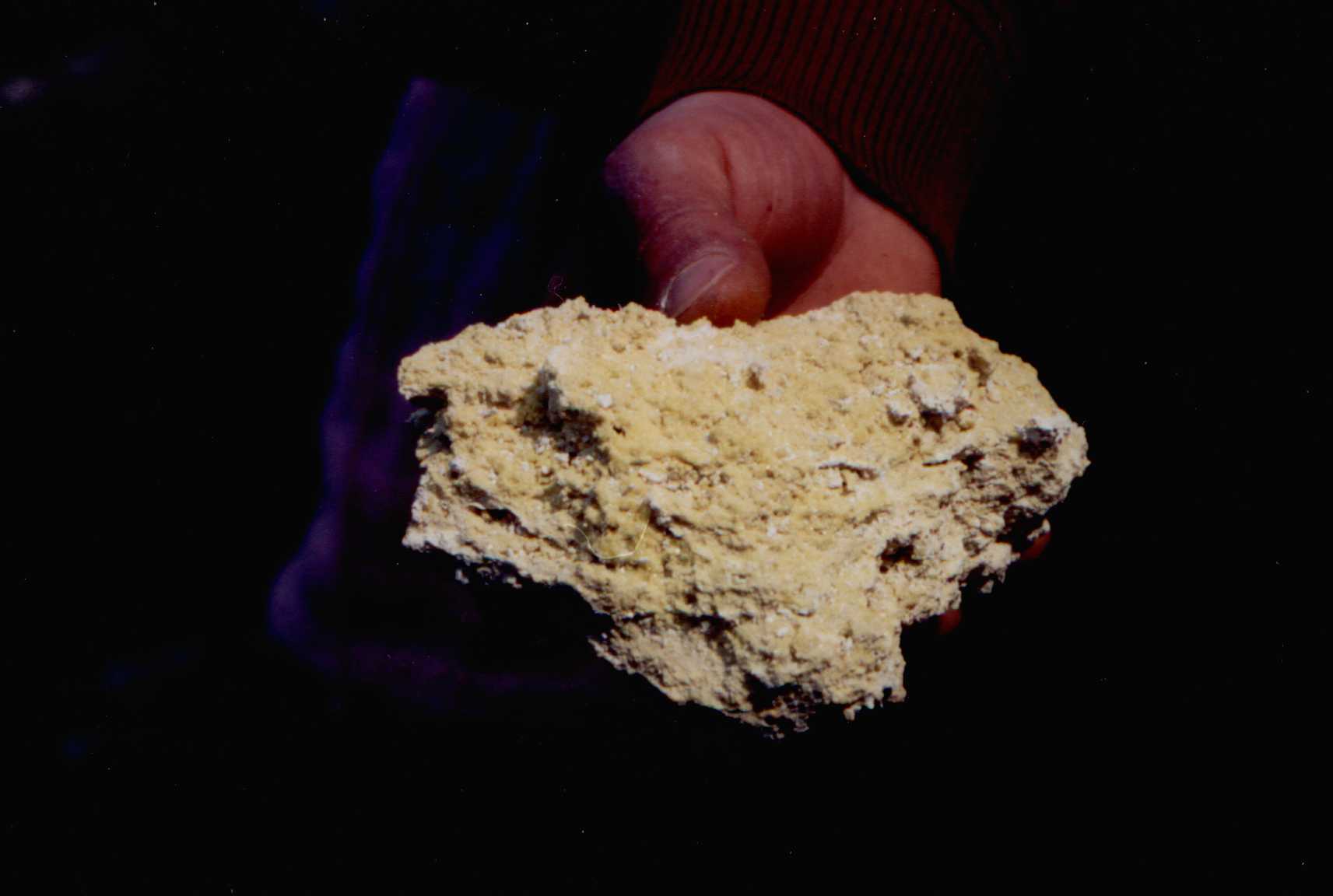
Photo n. 5
: we can see a stone taken around the fumaroles of Mount Pizzone and we can see in it sparkling the millions of yellow sulphur crystals that cover it.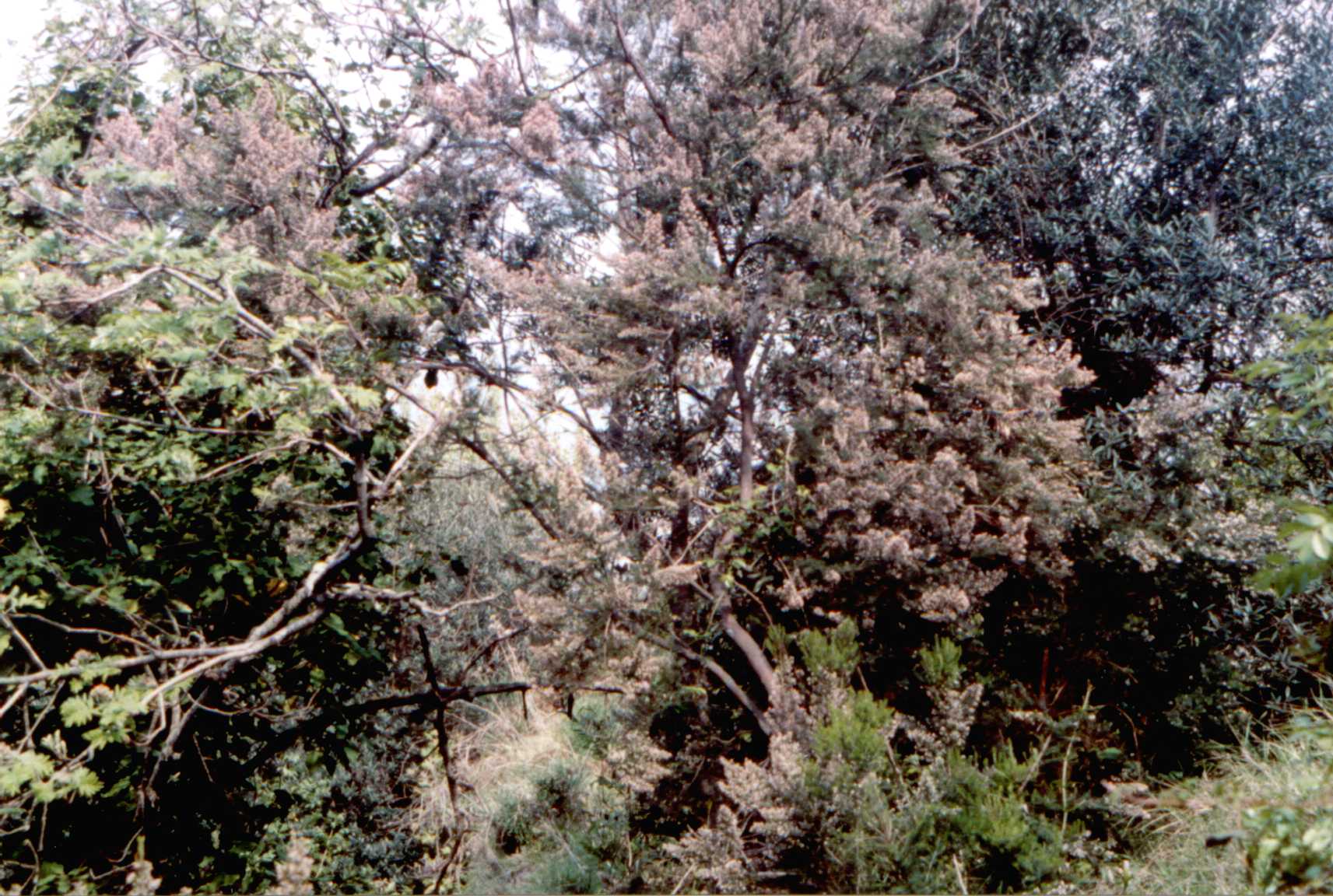
Photo n.6
: here we can see a heather, an olive and a sorb that is a very beautifulplant of the Mediterranean bush, raised around the fumaroles.
These photos clearly show that on our island exists a strange connection between the volcanic reality and Mediterranean bush, and thatís why we did a study on the geologic and volcanic evolution of Ischia whose results weíll try to transmitt you by the explanation of the following photos.
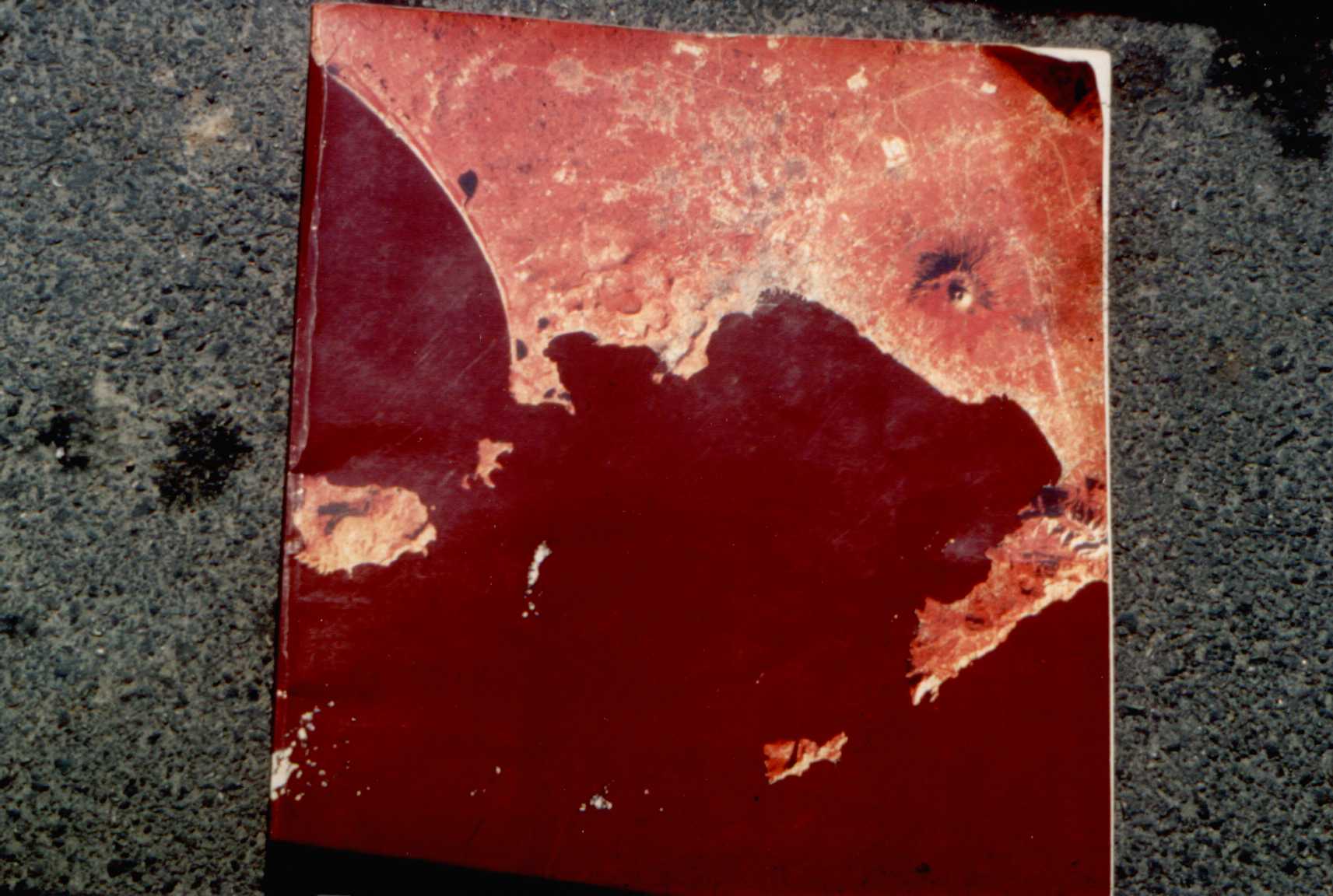
Photo n.7
: we can see The Campania with the gulf of Neaples in which the island of Ischia looks like a logic continuation of the Flegrei Fields, across the ideal bridgs of Procida and Vivara. Itís obvious, then, to think that volcanic, seismic and geologic phenomena that involved and involve our land are very similar to those ones of the puteolana area.
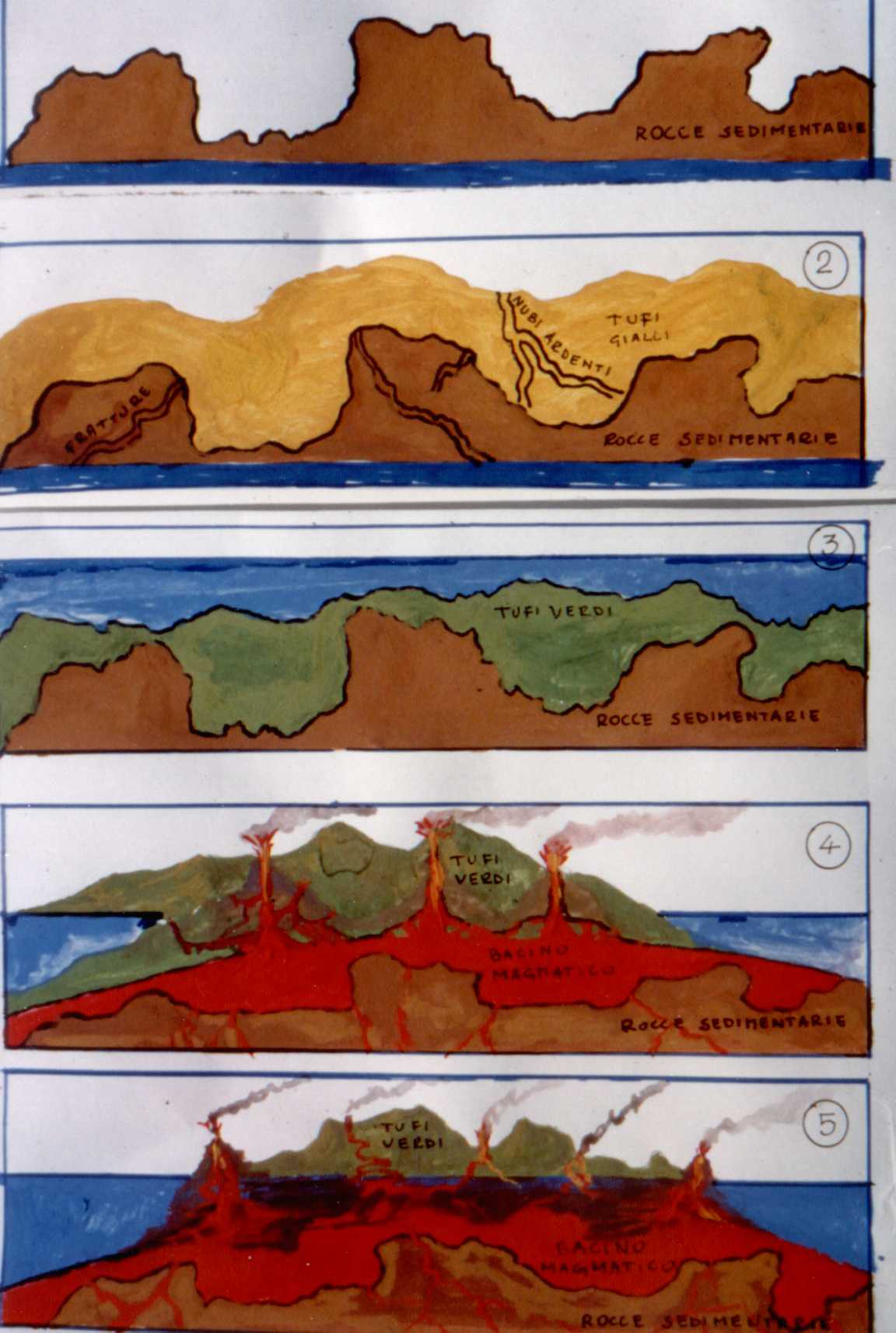
Photo n.8
: the photo shows a drawing we took from a work of our teacher published in the review "La rassegna di Ischia". The drawing is divided into five parts.The first part shows how a million of years ago Ischia wasnít isolated from the mainland yet and it was made up of a single stratum of sedimentary rock called emerging limestone from the sea. The limestone, that in the drawing is brown, is a rock similar to the raw marble. Then, a million of years ago between Neaples and Ischia there was all mainland.
The second part of the drawing shows how the movement of the continental mass Europe-Africa produced some breaks in the mass of the sedimentary rocks. Across these fractures went back the magma, that is the volcanic wash, causing some eruptions at a vary high temperature called "burning clouds" that covered the sedimentary rocks of a thick stratum of volcanic rock said tuff, that was first yellow-red coloured like shown in the drawing. For 400 thousand years the situation didnít change at all, but 600 thousand years ago the future island of Ischia was involved by a positive bradyseism for which, like shown in the third part of the drawing, slowly sank a few hundreds of metres under the sea-level where it remained for 400 thuosand years during which the tuff, being very porous, absorbed a lot of sea-water, that caused some chemical-physical evolutions and this made it to become the present typical green tuff of Ischia.
In the drawing n.4 we can see how 200 thousand years ago across the breaks of the sedimentary rocks (brown coloured in the drawing) a huge quantity of volcanic wash went back and formed a large magmatic basin dome-shaped which interposed between the below sedimentary rocks and the overhanging green tuff, which was, in this way, pushed up till to come out from the sea.
This is the way the island of Ischia was born and at the time of its birth it was much larger than to-day. But the tuff curving under the pushing magma broke in many points and this let volcanic wash come out and give birth to the volcanoes of the 1į eruptive period (as Mr. Rittman found out). These volcanoes (Mount Cotto, M.Campagnano, M. Vezzi, Aragone Castle and M. Vico) were very active in the period between 140 thosand and 75 thousand years ago.
Then there was a period of inactivity of about 50 thousand years, but 28 thousand years ago nearby Forio there was a fightening submarine eruption which built up the volcanic mount of the shoal of Ventotene and empted the most part of the magnetic basin under the island.
The 5th part of the drawing shows how the green tuff had nothing more under it so there were many fallings down in many parts of the island with large fractures which made the island go down the sea-level, it became much littler than before how clearly shown in drawing n.5 if compared with n.4.
Through these fractures the magma went back and produced eruptions whose stone bullets and washes built up what Mr. Rittman calls the volcanoes of the II period (the Scarpo, the Caccaviello, and so on).
Thatís all for now, the remaining part will be studied next year when we talk about volcanoes.
As a preview we show you one among the fifties and more that are on the island: il PORTO DíISCHIA.
